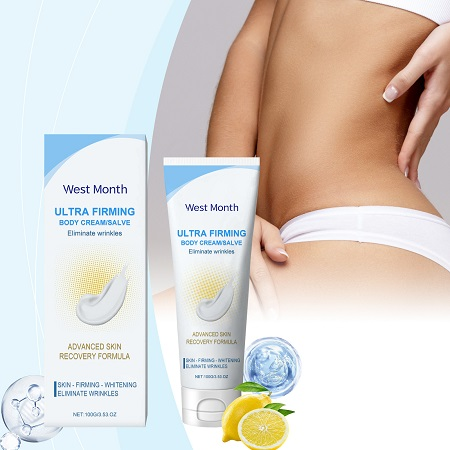WHAT JUICING MEAN
Juicing is the process of extracting the juice from fresh fruits and vegetables. It separates the liquid portion (the juice) from the solid portion (the pulp, which contains fiber). This results in a concentrated liquid containing vitamins, minerals, and antioxidants found in the original produce.
In simpler terms:
Imagine you have an apple. Instead of biting into it and chewing, juicing is like squeezing all the liquid goodness out of the apple, leaving behind the fibrous parts (skin, core, and pulp). Sounds yummy huh?
Key Characteristics of Juicing:
• Separates Juice from Pulp: The core feature of juicing is the mechanical removal of the fibrous pulp, leaving behind a primarily liquid product.
• Concentrated Nutrients: Because you are consuming only the liquid portion, you can consume a large quantity of fruits and vegetables in a single serving of juice, potentially leading to a higher intake of certain nutrients.
• Faster Absorption: Without the fiber, the nutrients in the juice are absorbed more quickly into the bloodstream.
• Not a Replacement for Eating Whole Fruits and Vegetables: It's crucial to understand that juicing should supplement a healthy diet, not replace whole fruits and vegetables. Whole produce provides valuable fiber, which is important for digestion, blood sugar control, and overall health.
• Various Methods: Juicing can be done using different types of juicers (will be discussed below), each with its own process for extracting the juice.
Why you would prefer to juice like others?
Various reasons, includes
• To increase their intake of fruits and vegetables: It's a convenient way to consume a large amount of produce in a short amount of time.
• To get a concentrated dose of vitamins and minerals: Juicing can provide a quick boost of essential nutrients.
• To improve energy levels: Some people find that juicing gives them more energy.
• To cleanse or detoxify their bodies: Although scientific evidence supporting detoxification claims is limited, some believe juicing helps rid the body of toxins.
• To support weight loss: Juicing can be part of a weight-loss plan, but it should be done in a healthy and sustainable way.
• To add variety to their diet: Juicing allows you to experiment with different flavors and combinations of fruits and vegetables.
Important Considerations:
• Fiber Loss: Remember that juicing removes fiber, which is a crucial component of a healthy diet.
• Sugar Content: Juices, especially those made primarily from fruits, can be high in sugar. Be mindful of sugar intake and balance fruit juices with vegetable juices.
• Cost: Juicers can be expensive, and the cost of fresh produce can add up.
• Cleaning: Juicers can be messy and time-consuming to clean.
In short, juicing is a way to extract the liquid essence of fruits and vegetables for concentrated nutrients, but it's important to be aware of its limitations and potential drawbacks. It's a tool that, when used thoughtfully, can be part of a healthy lifestyle.
BEST TIME TO DRINK JUICE
For maximum benefits, always consume fruit juice alone and not with breakfast or snack.
When consumes alone, the nutrients are quickly absorbed by the body. Typically, within 15-20 minutes, the entire fruit juice gets digested.
Eating other foods along with the juice slows down the digestion and absorption as well. This may also result in acidity, loss of appetite and slow digestion.
So you can drink juice early in the morning or anytime of the day. Just follow the rules. Drink juice alone.
GENERAL RULE FOR JUICING:
Use 80% vegetables and 20% fruits when juicing.
This is very important because this will make it suitable to everyone, whether you want to lose weight or you are diabetic patient, etc. Though kids can take 100% fruit Juice
Benefits of Juice
1. Hydration: Juice can be a refreshing way to stay hydrated, especially during hot weather or after exercise.
2. Nutrient-rich: Juice can be a good source of essential vitamins, minerals, and antioxidants, depending on the ingredients used.
3. Supports immune function: Certain juices, such as those made with citrus fruits or berries, may help support immune function.
Tips for Healthy Juicing
1. Choose whole fruits and vegetables: Use whole fruits and vegetables to make juice, rather than relying on packaged or concentrate-based products.
2. Variety is key: Mix and match different fruits and vegetables to create unique flavor profiles and maximize nutritional benefits.
3. Watch sugar content: Be mindful of the sugar content in juice, especially if you're using high-sugar fruits like tropical fruits or grapes.
4. Consider pulp and fiber: Some juicers remove pulp and fiber, which can be beneficial for digestive health. Consider using a juicer that preserves pulp and fiber.
Samples of popular Juice Combinations
1. Green juice: Combine kale, spinach, green apple, and lemon for a nutrient-packed drink.
2. Citrus blast: Mix orange, grapefruit, and pineapple for a refreshing and immune-boosting drink.
3. Berry bliss: Combine blueberries, strawberries, and raspberries for a sweet and antioxidant-rich drink.
Precautions to juices
1. Consult a healthcare professional: If you have specific health concerns or allergies, consult with a healthcare professional before making significant changes to your juicing habits.
2. Cleanliness is key: Ensure that your juicer and ingredients are clean and sanitized to prevent contamination and foodborne illness.
3. Consume in moderation: Enjoy juice in moderation as part of a balanced diet, and be mindful of sugar content and calorie intake. Just as too much of everything can be unhealthy.
TYPES OF JUICERS
let's explore the different types of juicers available. The main types differ in how they extract juice from fruits and vegetables, impacting juice quality, yield, and the type of produce they handle best. Here's how
1. Centrifugal Juicers:
• How they work: These are the most common and affordable type of juicer. They use a fast-spinning blade (like a cheese grater) to shred the produce. The shredded pulp is then spun at high speed, forcing the juice through a mesh filter and into a separate container.
• Pros:
• Fast: Juices quickly, ideal for busy individuals.
• Affordable: Generally the cheapest option.
• Easy to use and clean: Simpler design means less fuss.
Cons:
• Noisy: The high-speed motor can be quite loud.
• Lower Juice Yield: Leaves more juice in the pulp compared to other types.
• Heat Generation: The fast spinning can create heat, which can destroy some nutrients and enzymes.
• Oxidation: The high-speed process introduces more air, leading to faster oxidation and nutrient loss in the juice (shorter shelf life).
• Limited to certain produce: Less effective with leafy greens and soft fruits.
• Best for: Beginners on a budget who primarily juice hard fruits and vegetables like apples, carrots, and celery.
2. Masticating Juicers (Slow Juicers/Cold Press Juicers):
• How they work: These juicers use a single auger (a screw-like mechanism) to crush and squeeze the produce, extracting juice through a filter. They operate at a much slower speed than centrifugal juicers.
• Pros:
• Higher Juice Yield: Extracts more juice from produce, reducing waste.
• Nutrient Retention: The slow speed minimizes heat and oxidation, preserving more nutrients and enzymes.
• Versatile: Can handle a wider range of produce, including leafy greens, wheatgrass, and soft fruits.
• Quieter: Operates much more quietly than centrifugal juicers.
• Longer Juice Shelf Life: Slower oxidation results in juice that stays fresher for longer (up to 72 hours if refrigerated).
• Cons:
• Slower Juicing Process: Takes longer to juice than centrifugal juicers.
• More Expensive: Cost more than centrifugal juicers.
• More Prep Work: Some models require chopping produce into smaller pieces.
• Best for: People serious about juicing, especially those who want to juice leafy greens, wheatgrass, and other tough produce. Also good for those prioritizing nutrient retention and higher juice yield.
3. Triturating Juicers (Twin-Gear Juicers):
• How they work: These are the most advanced and expensive type of juicer. They use two interlocking gears (augers) to thoroughly crush, grind, and press the produce, extracting the maximum amount of juice.
• Pros:
• Highest Juice Yield: Extracts the most juice possible from produce.
• Maximum Nutrient Retention: The slow, gentle process minimizes heat and oxidation, preserving the most nutrients and enzymes.
• Extremely Versatile: Can juice almost anything, including leafy greens, wheatgrass, nuts, and seeds.
• Longest Juice Shelf Life: Produces juice with the longest shelf life (up to 72 hours or more).
• Cons:
• Most Expensive: The most expensive type of juicer.
• Slowest Juicing Process: Takes the longest to juice.
• Complex Cleaning: Can be more difficult to clean than other juicers.
• Best for: Dedicated juicers who want the absolute highest juice yield and nutrient retention, and who juice a wide variety of ingredients. Also good for those wanting to make nut butter or other food preparations.
HOW TO CHOOSE A JUICER
Consider these factors when choosing a juicer:
• Budget: How much are you willing to spend?
• Frequency of Juicing: How often will you be juicing?
• Types of Produce: What types of fruits and vegetables will you be juicing?
• Nutrient Retention: How important is it to you to preserve nutrients?
• Convenience: How much time and effort are you willing to spend on juicing and cleaning?
By carefully considering these factors, you can choose the type of juicer that best meets your needs and preferences.


 Mary-Ann Boakye
Mary-Ann Boakye
